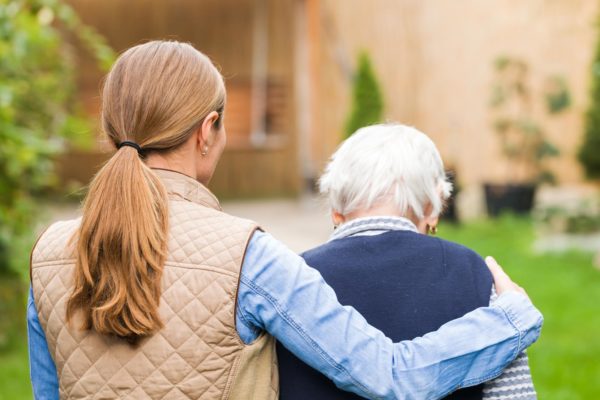Longer life expectancies have not translated into longer disease-free lives. In our rapidly aging society, increasing numbers of older adults have debilitating health conditions — such as cancer, arthritis and Alzheimer’s — that can cause chronic pain and functional decline. Hopelessness about health conditions, in turn, may lead to the onset or recurrence of depression and other mental health illnesses.
In a recent study, social work professors Namkee Choi and Diana DiNitto found that physical health problems and untreated depression are often significant drivers of suicide among older Americans.
“Many people may not know that suicide rates are higher among older than younger adults,” Choi says. “This is especially true for older men, who are approximately 85 percent of all suicide victims aged 65 years or older.”
“Many people may not know that suicide rates are higher among older than younger adults.” — Namkee Choi
Whereas previous studies had looked at a small number of cases, Choi and DiNitto analyzed 10 years (2005-2014) of data on all older adults who died by suicide in 16 states. The database they used (the National Violent Death Reporting System) contains information from death certificates, coroner/medical examiner and law enforcement reports, crime labs and toxicology reports and, when present, a summary of the suicide note contents. These multiple sources allowed them to identify key trends about older people who died by suicide.
Recent research has shown that some older adults, especially men, tend to view suicide as acceptable and rational under conditions of physical illness.
“Rather than a reason for making suicide acceptable, this is a call to take measures to relieve the pain and suffering that precede suicide,” DiNitto says.
Here are four ways to help prevent suicide among older adults in your life.
1. Learn about suicide warning signs and how to provide support.

There are many verbal and nonverbal suicide warning signs, including talking about wanting to die rather than suffer through chronic illness and pain, looking for a means of suicide such as acquiring a gun, increasing alcohol or drug use, talking about being a burden to others, and stating that death is preferable to a nursing home.
If you are not sure where to start, the National Suicide Prevention Lifeline (1-800-273-8255) offers 24/7 free and confidential prevention and crisis resources.
Encourage the older adult to seek help and assist him or her in locating it. If you are not comfortable talking about suicide with an older adult, talk with a trusted mental health clinician. If you are not sure where to start, the National Suicide Prevention Lifeline (1-800-273-8255) offers 24/7 free and confidential prevention and crisis resources.
2. Take disclosures seriously

Don’t let a disclosure go unheeded. Most people who plan suicide are ambivalent about whether to follow through. A disclosure is a call to provide support and connect the older adult to resources that can provide life-saving care.
You can find resources through a trusted clinician or by calling the National Suicide Prevention Lifeline (1-800-273-8255). You can also take the older adult to a hospital emergency department for a suicide risk assessment. Inpatient care may be necessary, but if the older adult opposes hospitalization, get professional advice about whether there are methods to avert this option.
If you feel comfortable talking about suicide with the older adult, discuss the person’s feelings and show empathy. Help him or her identify reasons for living, and develop a safety plan. Safety plans include reducing access to potential means of suicide, recognizing suicide triggers and signs, identifying family members or friends the person can contact to help reduce crises, and contacting mental health professionals and suicide prevention helplines.
You may also help them write a “coping card” that lists specific steps to take when suicidal thoughts occur — for example, meditate and focus on breathing, read a scripture and pray, look at family pictures, call loved ones, talk to a neighbor.
Finally, you may also help them construct a “hope box” containing pictures, letters, poetry, videos, prayer cards and any other materials with personal meaning they can turn to in times of need.
A disclosure is a call to provide support and connect the older adult to resources that can provide life-saving care.
If you are interested in receiving training in suicide first aid, ASIST offers two-day interactive workshops throughout the country that teach participants to recognize when people may have thoughts of suicide and how to work with them to create a plan that will support their immediate safety. You can find a workshop near you by checking ASIST online workshop schedule.
3. Restrict access to guns and alcohol

A higher proportion of older than younger adults’ suicides involved a gun, according to Choi and DiNitto’s analysis. The firearm use rates (80 percent among older men and 40 percent among older women) have not changed for a decade.
“The lethality of firearms makes the chance of rescue slim and contributes to higher rates of completed suicides among older adults,” Choi says.
Suicidal thoughts tend to subside over time. Making it more difficult for individuals to act on suicidal thoughts by restricting access to highly lethal suicide means such as guns is a helpful preventive measure. Restricting access to alcohol can also help. Research shows that older adults often use alcohol to reduce their inhibitions about taking action on suicidal thoughts.
4. Find palliative care providers

Palliative care is specialized medical care focused on providing relief from the symptoms, side effects and stress of a serious illness in order to improve the quality of life for the patient and the family. Unlike hospice care, which is offered when a person is approaching the end of life (usually defined as having a life expectancy of 6 months or less), palliative care can be offered earlier in the disease process.
Physical health problems were recorded as a precipitant for half of the older adults who had died of suicide in Choi and DiNitto’s study. Pain from cancer, arthritis and other diseases was mentioned most often.
You can contact the Center to Advance Palliative Care for a list of providers by state or the National Hospice and Palliative Care Organization for a list of hospice and palliative care providers.
“Rather than a reason for making suicide acceptable, this is a call to take measures to relieve the pain and suffering that precede suicide.” — Diana DiNitto




